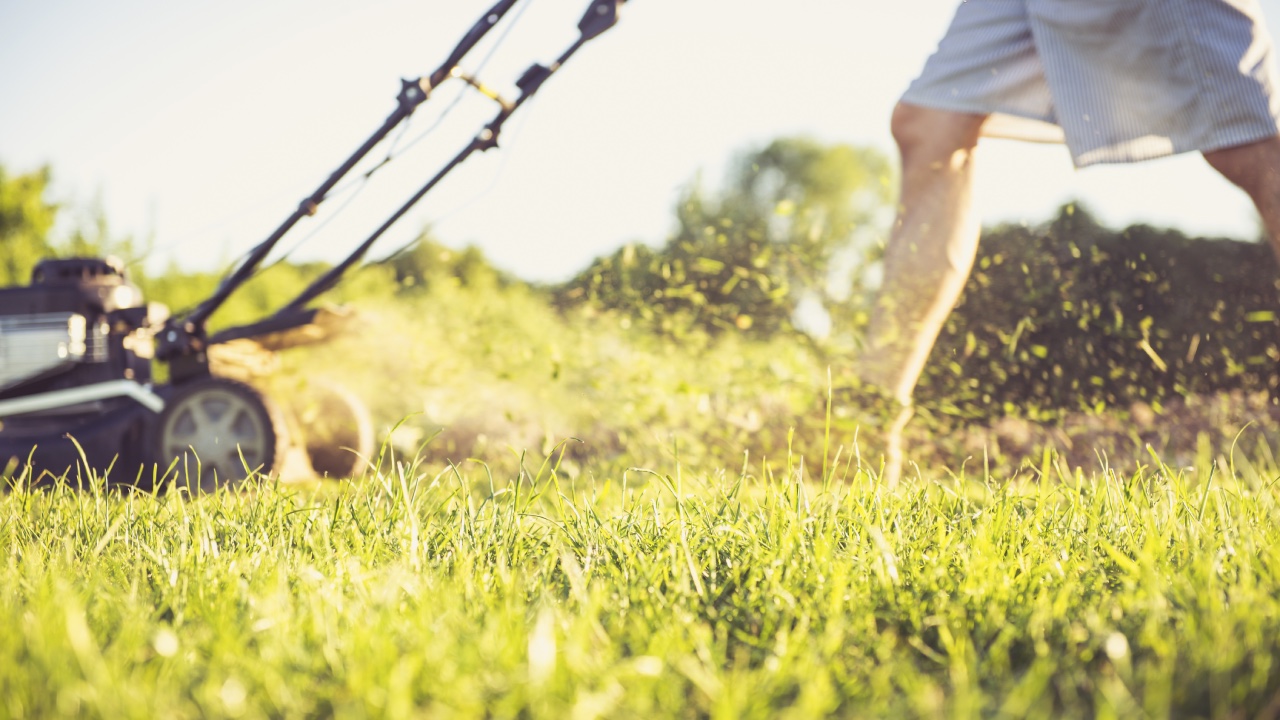12 things you should never do to your lawn

Whether you have a green thumb or not, it’s easy to maintain a blissful, barefoot-worthy backyard. For starters, avoid these no-nos.
Don't remove grass clippings
Leaving grass clippings on the lawn after you mow can cause thatch problems, right? Nope! That’s a myth. Turns out, grass clippings can actually help with the overall health of your lawn. And (bonus!) that means less work for you when you mow.
Don't skip aerating
Most lawns, whether seeded or sodded, are planted over a fairly skimpy layer of topsoil. Over time, lawn mowers, pets and football games compact the soil, making it difficult for air, water and vital nutrients to penetrate to the grassroots.
Your challenge: to restore healthy soil conditions that nurture your lawn. To loosen and aerate the soil, rent a power core aerator. They’re available at rental centres, plus some hardware stores and garden centres.
Don't use a dull mower blade
Dull mower blades rip through the grass blades instead of slicing them cleanly, and that stresses the plant. You can always tell a lawn that’s been mowed with a dull blade because it looks brown on the top.
Get on your hands and knees and you can actually see the damage. Be sure to sharpen your mower blade each season to keep your lawn in good shape.
Don't water every day
Did you know your lawn can actually get dependent and needy if it has too much water? Instead of watering every day for 15 minutes, choose one day a week to water the lawn for an entire hour. Your lawn will be watered deeply, and it will be healthier and more drought-tolerant.
Don't forget to dethatch
Thatch is a layer of slowly decomposing grass stems, roots, clippings, and debris that accumulate at the soil surface over time. It can build up in your lawn and virtually choke it to death. Excessive thatch build-up is commonly found in lawns that have been overfertilized or overwatered and have never been aerated.
Thatch build-up of 2cm or more will restrict water and nutrient penetration into the soil (think thatched roof) and can harbour disease organisms that can increase the need for pesticides. Slice open a section of turf. If the thatch is more than 2cm thick, take action.
Don't give up on shady areas
Growing grass under shade trees isn’t easy, but one key to success is choosing the right shade grass species and planting method for your region. In cool-season areas, you’ll get a better result using seed rather than sod. Sod is grown in wide-open fields under conditions that favour sun-loving grasses.
Garden centres will have grass seed mixes formulated for shade. Late summer and mid-spring are the best times to establish cool-season grasses in shady areas.
Don't wait too long between mowing
If you came back from a holiday and didn’t arrange to have the grass mowed while you were away, don’t try and mow it down in one day. Cut off some of the length and then wait a couple of days and mow again. This will cause less stress on the grass. You may need three passes depending on how long the grass grew.
Don't cut grass too short
Every grass type has an optimal cutting height, and you’re better off on the high side of that height. Here are a few reasons: The grass blade is the food factory of the plant. Short blades just can’t generate as much food as long blades. Long blades also shade and cool the soil.
That means weed seeds are less likely to sprout, and you won’t have to water as often because water won’t evaporate as fast. Not sure what type of grass you have? Take a sample to a garden centre for identification.
Don't mow in the same direction every time
Instead, mow in a different direction every time: front to back, back to front, diagonal, etc. Repeatedly mowing the exact same way will cause the grass blades to grow at an angle, and you may develop permanent tracks from the mower wheels.
Don't cut wet grass
Mowing wet grass can cause the mower wheels to leave ruts in your yard, and you could leave behind giant clumps of clippings that could smother the grass beneath. And the wet grass will carpet the underside of your mower deck with a thick mat that’s a pain to clean. Yikes!
Don't overfeed
If you apply too much grass fertiliser, especially in sandy soils, a good share of it will leach through the soil and make its way into our precious groundwater, rivers, streams and wetlands. Lawn grasses only need a certain amount of food. More isn’t always better.
Don't ignore pet areas
Dog spots are round patches about 10 to 20cm in diameter with dead grass in the middle, encircled by dark green grass. They’re most apparent in the early spring when dormant grass first begins to turn green again. You have to replant your grass; it won’t come back on its own.
But first, you have to dilute or remove the caustic urine from the soil. Thoroughly soak the area with lots of water.
Image credits: Getty Images
This article originally appeared on Reader's Digest.
